Building Acceptance to AAC- Accessibility
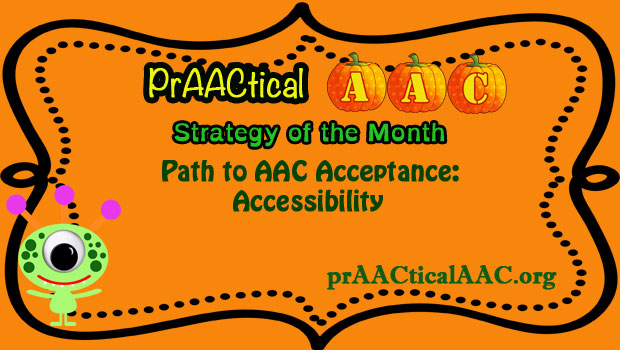
It is AAC Awareness Month and everyone has really been spreading the word and helping to build AAC acceptance. Participation barriers continue to prevent full AAC acceptance. In order to help combat these obstacles it is necessary to talk about them, deconstruct them, and attempt to build solutions. So after going over attitudinal barriers and information barriers, we need to discuss accessibility barriers. It’s a shame that there are so many barriers to making AAC work, but we know that with awareness comes improvement.
Barriers of accessibility can be about motor, sensory, cognitive, literacy, or communication/language issues. For this discussion though the focus is on accessing AAC to learn a comprehensive language in ALL modalities (i.e., talking, listening, reading, & writing). The prevention of access to a comprehensive system is usually tied in to assumptions about cognitive and literacy skills. Although it seems that most professionals realiize that there is no pre-requisite to access to some type of AAC (we hope), it seems that there continues to be an INCORRECT perception that there are prerequisites to having access to complete and robust AAC systems. It is infuriating that incompetence is presumed before any teaching or Visual Immersion Program is provided.
We can not expect for children to learn language by exposing them to a few picture symbols. Yes, they may learn to request those things, or even comment but it’s just not enough. We need to teach individuals with complex communication needs (CCN) comprehensive language. The amount of conflict over ‘proof’ that an individual can use an AAC system before they even have have meaningful access to it is maddening (sorry if we already said this but recent experience says it all). We would never try and teach or learn a language with only access to a few words. AAC is like a visual language overlay and should be robust and authentic. Students need more than 4-6 weeks with before we say ‘nope not for you’. We need children to have access to multiple AAC systems, just as we do (We use the phone, text, email, & even handwritten notes). As we continue to support the path to AAC Acceptance by breaking down barriers, we can help individuals with CCN gain ACCESS to AAC systems that include no tech, low tech, & high tech with comprehensive language displays.
Food/Words for Thought: – An Analogy 
“Individuals with CCN (complex communication needs) are often denied access to computer technologies until they can demonstrate that they can use them. Such denial deprives these individuals of the ‘opportunity’ to learn, placing them at risk to fall further and further behind their peers. Pencils are not withheld from children without disabilities until they prove they can write; rather they have access to pencils, crayons, markers, and other writing implements early on, before they know how to write, in order to support their learning of writing skills. Similarly, early in their development, individuals with CAN require access to technologies and/or software to serve as ‘electronic pencils’ along with other supports for writing and drawing”. Beukelman & Mirenda’s (2013), Augmentative & Alternative Communication: Supporting Children & Adults with Complex Communication Needs, (pp. 320), Baltimore, MD: Brookes Publishing.
Filed under: Strategy of the Month
Tagged With: AAC Awareness Month, Barriers, Path to AAC Acceptance: Accessibility
This post was written by Robin Parker

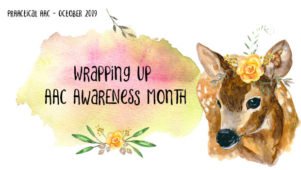
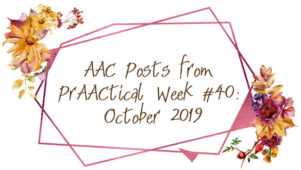
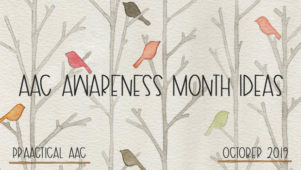
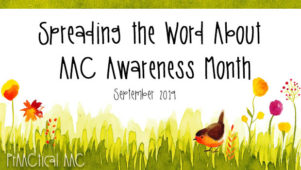
4 Comments
Couldn’t agree more Robin! On Thursday I had the perfect example of this. I’m working with a great teacher this year and one of her students has had access to just a few symbols as her communication system – and wasn’t using it (surprise, surprise). Two other students in her class have PODD books and for the last 4 – 5 months the teacher has been wearing a group PODD and modelling it. 7 weeks ago we gave this student her first PODD book – and have mostly been using it receptively with her (plus using the group PODD to continue modelling). She has used it expressively occasionally – but mostly with people saying things to her like “which animal in the book was your favourite”. Hmmm – let’s think – to get to the animals page I need to go “More to say, categories, animals”. And then once they are on the animals page she would select an animal. On Thursday I was doing some writing with her and I said “Hey – your book of the week is the Gruffalo. Let’s write about what you think of the Gruffalo”. She said “Turn the page, Let’s do something else, places, visit, Mum”. I said “Oh – you’d like to write about visiting mum”. She said “no” – and her teacher leaned over and said “Her mum is in a meeting in the music room”. And so all that good practice came together – months of modelling, providing her with a good vocab and giving her constant access to it and practice with it. I’m still beaming about it! And we even got it on video 🙂 And if we had just done a 4 week trial without all the modelling and embedding it through the day – or even with less vocab because we assumed she couldn’t manage it – she never would have been able to say that.
Amazing! Thanks for sharing this great example of accessibility in prAACtice! If we keep sharing the implementation strategies, hopefully more AAC users will be properly educated.
Oh THANK YOU THANK YOU THANK YOU Robin for another brilliant post. I had the most beautiful communication interaction with a 12 year old girl that I met for the first time yesterday. We were starting our very 1st communication group’s hello circle and this girl grabbed the hi/bye aided language display and started scrunching the top right corner. She was staring at the symbol as she scrunched and I said, “ooh, I can see you are touching the ‘wanna play?’ symbol”. She wriggled and giggled and did a whole body lurch forward to try to nod her head for ‘yes’. I said, “I wonder who you are saying ‘wanna play’ to” and see stilled, searched the entire room with her eyes, and tracked down her father who was hiding behind her. She stared at him, giggled, then used her voice to call him over to her. Dad came to join us and to talk about what to play. This girl used so many strategies to indicate yes or no to PA scanning of the PODD activities page and told us she would like to read a book with Dad. When I asked her parents what AAC their daugter had they brought over an 8 cell tech talk with symbols in four cells – they were food, drink, more, finish.
What more can we do to get the message of LANGUAGE out there and into classrooms? It is breaking my heart.
Mary-Louise
Wow! If we keep sharing stories about the process of language learning and then the success, there will have to be a ‘tipping’ point sometime soon. I guess we just need to keep sharing and spreading the word. Thanks again, please keep us posted about this little girl.